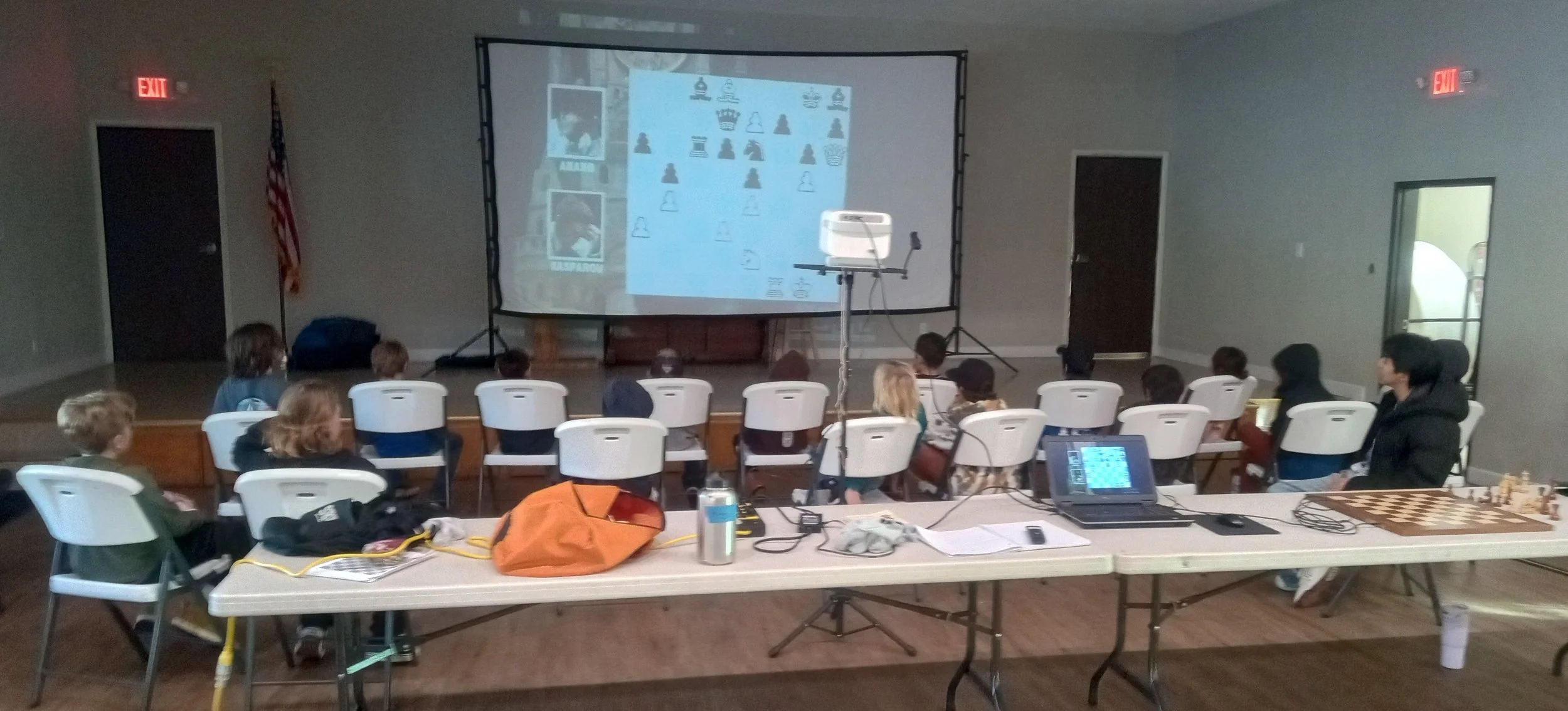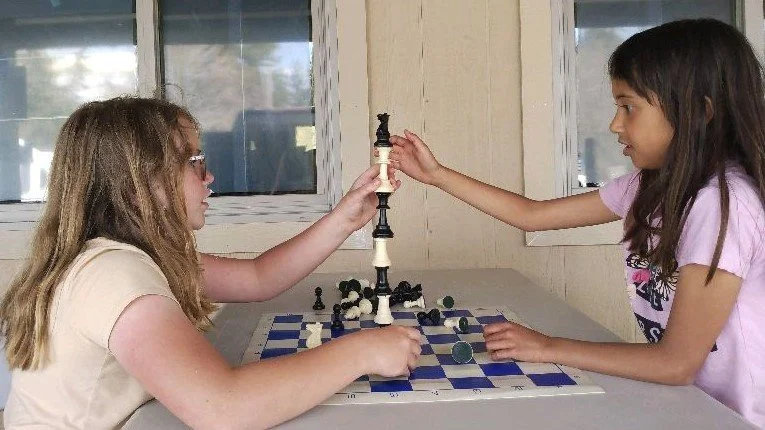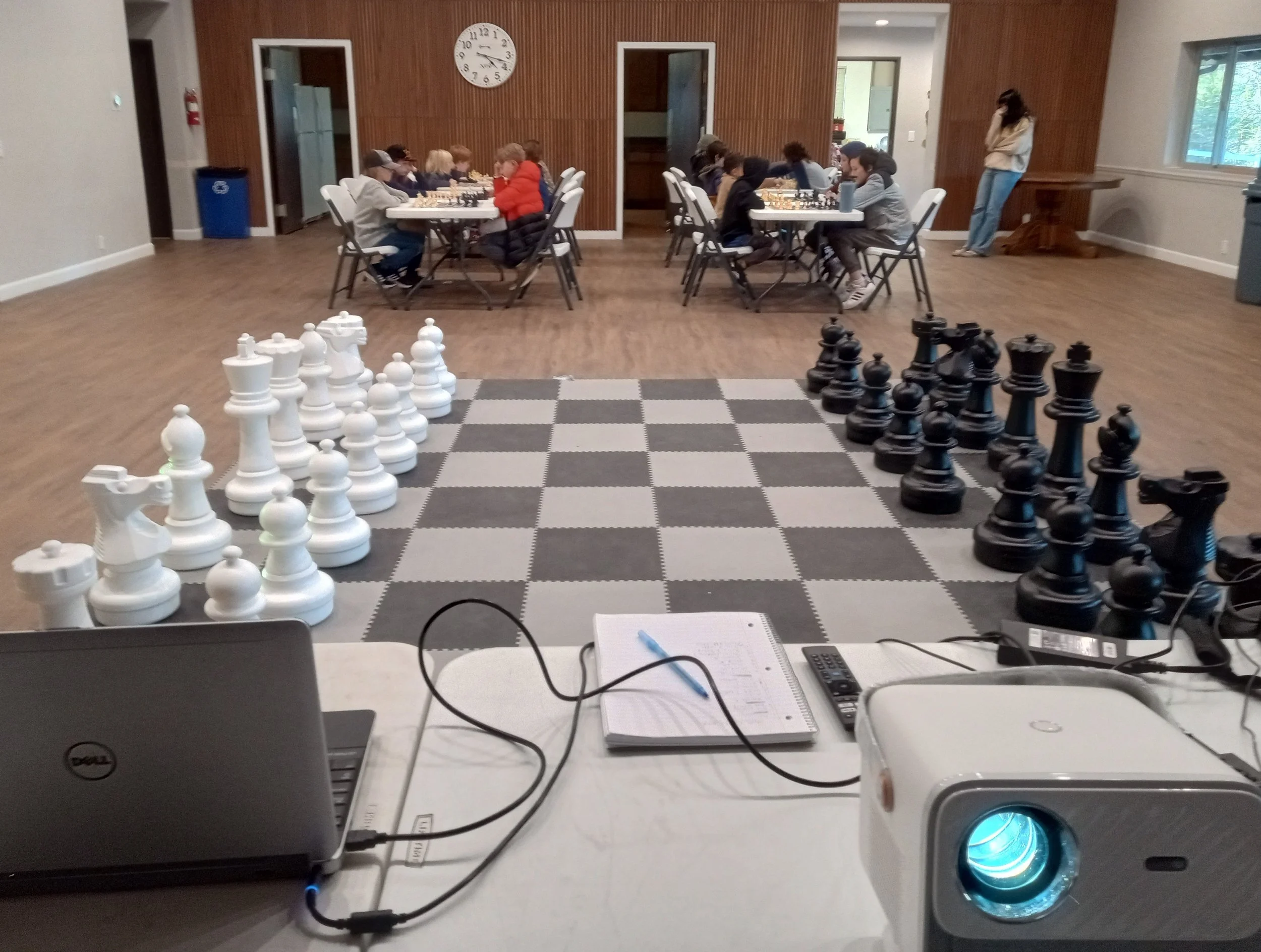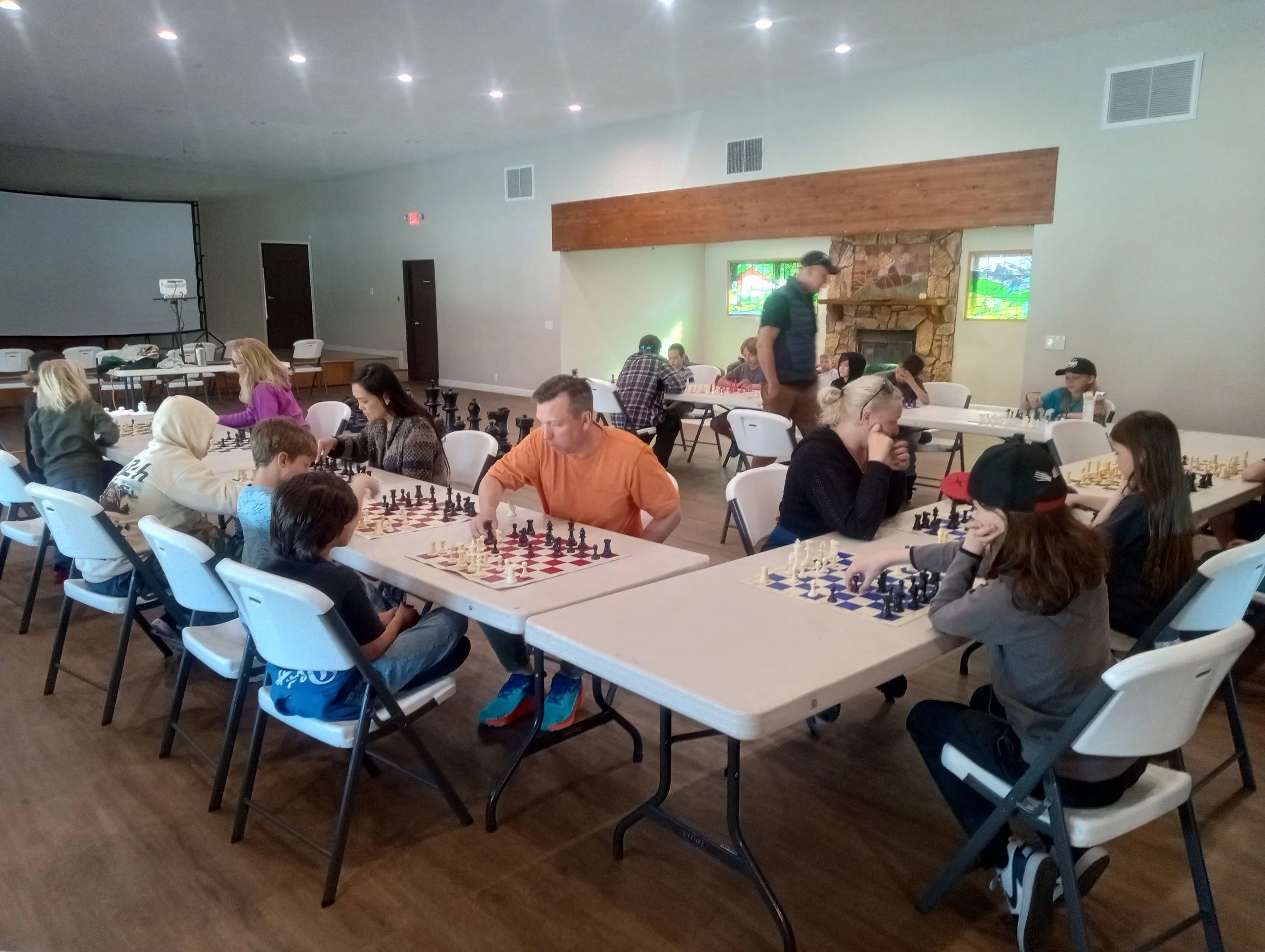Chess 1 Curriculum Introduction for Beginners:
My teaching philosophy is to make learning chess fun! From the lessons to the activities, it is important to make the learning process interesting and engaging. I have a background in education, and I enjoy finding creative teaching solutions for chess. My lesson plans come from years of teaching experience, studying chess, games played, analysis, and developing a love and appreciation for this beautiful and timeless game. My background in both education and chess have helped with my lesson planning & implementation. There are a lot of nuances to teaching chess. You must understand your student's skill level & which teaching methods they respond well to. It is important to find the right tempo with the length of lessons, feedback, & activities. It is imperative to make sure the students are learning what you're teaching them. You must check for understanding. I find the Socratic teaching method works well, but not all kids learn the same way. There is a lot that goes into giving kids a quality chess education. Finding a highly qualified chess teacher can be challenging. You can hire a grandmaster to teach chess, but they might not be a good teacher, or you could find a good teacher, but they know little about chess. My lessons evolve over how the kids are learning, and it's important to be flexible and modify the chess curriculum to fit the needs of the students.
In addition to teaching chess online, I also teach in-person chess classes. In the pictures below are some of my chess classes. Notice the jumbo screen with a projector and audio equipment to make lessons efficient & engaging. Notice the giant chess set and DGT board for fun activities. In one class I had a parents vs the students event, which was a fun activity for all. Other fun activities we enjoy are chess bingo, simuls, team events, piece stacking, live music with chess songs we write covering lessons taught in class, etc. My strategy is usually a lesson first while checking for understanding (I ask my students lots of questions during lessons to check for understanding), followed by fun activities that support the lessons.
I carefully plan lessons to be challenging, but not beyond their scope of understanding. I choose appropriate level positions for students to analyze that are relevant to the lesson. Timing is also crucial. The lesson should not be too long, nor too short. The students want to enjoy the learning process. Finding the right rhythm and balance is important.
The lessons should also be harmonious. If the students are ready for a lesson on how to create and control open files, then that lesson should be followed up with a lesson on what to do with open files.
It is important that students come away from a lesson with some concrete knowledge that they can use.
Chess 1 Curriculum (Beginners):
Welcome and Introduction
• Introducing the Game and Learning the Chessboard Part 1 –
A brief history of the game, basic terminology and score keeping (Algebraic Notation)
• Introducing the Game and Learning the Chessboard Part 2 –
Setting up the board and learning the relative value of the chess pieces
Section 1 – Starting Out: The Basics of Chess
Lesson 1
• Meet the Players Part 1
Introducing the King, Knight and Pawn
• Mini-Game(s) 1 – The Farmer and the Piggies
• The Farmer and the Piggies Instructor's Sample
• Mini-Game(s) 2 – Pawn Wars
• Moving the King
• Moving the Knight
• Moving the Pawn
• Mini Games (Blue & Step Books)
Lesson 2
• Meet the Players Part 2
Introducing the Rook, Bishop and Queen
• Meet the Players
• Moving the Rook
• Moving the Bishop
• Moving the Queen
• Mini Games (Blue & Step Books)
Lesson 3
• The Aim (Goal) of a Chess Game
• Part 1 – Check and How to Escape Check
• Part 2 – Checkmate and Introduction to Stalemate
• Check the King
• Capture the Checker
• Blocking Check
• Running from Check
• Is this Checkmate?
• Mini Games (Step Book)
Lesson 4
• Basic Checkmates and Stalemate
• Part 1 – Basic Checkmates, King and Queen vs Lone King
• Part 2 – Basic Checkmates, “Rook Roller” – Two Rooks vs Lone King
• Part 3 – Stalemate (No Legal Moves) Explained
Section 2 – The Basics of Playing, the “Phases” of Chess & the Opening
Lesson 5
• How to Win or Draw a Chess Game
• Part 1 – Attacking your Opponent and Counting Attackers Defenders
• Is It Defended?
• Dog-Pile Quiz
• Who's Hanging?
Lesson 6
• Special Moves – Castling and “En Passant”
• What is Castling?
• When is castling allowed & not allowed?
• Super-Pawns: “En Passant”
• Can You Capture En Passant?
Lesson 7
• Phases of a Game, Planning, & Your Opponent
• Part 1 – The Three Phases of a Chess Game (Opening, Middle, & Endgame)
• Part 2 – Learning the Basics of “Planning” in Chess
• Part 3 – Why Did My Opponent Move There?
• Is my opponent threatening anything?
• Am I threatening anything?
• What are my Checks and Captures?
• What is my worst piece & how can I make it better?
• Is it a safe square?
• Blunder Checking
Lesson 8
• The “Quick” Mates & Other Basic Checkmates
• Part 1 – “Fools” Rush In, the “Fidgety King”, the “Knight's Dream”, Scholar's” and the
other Four Move Checkmate
• Part 2 – Other Basic Checkmate Ideas and Patterns
• Famous Checkmates
• Guarding f2 and f7
Lesson 9
• The Roles of Checkmate
• Chaser
• Helper
• Guard
Lesson 10
• Starting Out a Chess Game: Opening Principles
• Part 1 – The Basics of Development and Queen Play in the Opening
• Part 2 – Advanced Development: Controlling the Center; Connecting the Rooks; and
Playing with a Purpose
• Starting Out a Chess Game: Six Opening Principles (Harmony, Center, Safety, Development, Time, & Initiative)
• What are the 3 Golden Rules in the Opening?
• Connect the Rooks
• Counting Development
Lesson 11
• Is it a Draw?
- The Five Ways to Draw in Chess:
1. Stalemate
2. Insufficient Material
3. Repeat a Position 3 Times / Perpetual Check
4. 50 Move Rule (50 Consecutive Moves Without a Pawn Move or a Capture)
5. Both Players Agree to a Draw
Lesson 12
• The Art of Defense
• Part 1 – Moving Away
• Part 2 – Protecting
• Part 3 – Capturing
• Part 4 – Blocking
• Part 5 – Line Clearing
Section 3 – Tactics, Tactics, & More Tactics!
Lesson 13
• Chess Tactics: Double Attack & The Fork
• Essential Tactical Knowledge: Double Attacks & the Fork
• Which is It?
• Knives & Forks
Lesson 14
• Chess Tactics: Learning to Pin & Skewer
• Part 1 – Winning Chess Tactics: Learning to Pin
• Part 2 – Breaking the Pin
• Part 3 – Winning Chess Tactics: Learning to Skewer
• Pin 'em & Skewer 'em
Lesson 15
• Chess Tactics: Discovered Attacks & Double Checks
• Part 1 – Discovering Discovered Attacks in Chess
• Part 2 – More Discovered Attacks and Double Checks
• Use Your Discovery
Lesson 16
• Chess Tactics: Deflect, Destroy & Remove
• Part 1 – Removal of the Defender and Deflection
• Part 2 - Using Tactics to Win
Section 4 – Endgame Play: Passed Pawns, Technique & King Play
Lesson 17
• Rook Mates, Zugzwang & King Play
• Part 1 – Basic Checkmates: King and Rook vs Lone King
• Part 2 – Zugzwang Explaining and Examples
• Part 3 – King Play, King Power and King Activity
• Mini-Game(s) – King Play Practice Games
Lesson 18
• Passed Pawns, Promoting & Other “Pawn Tactics”
• Part 1 – Introduction to Passed Pawns and Basic Pawn Play Strategy
• Part 2 – Under-Promotion, Pawn Tactics and the “Rule of the Square”
• Mini-Game(s) – Converting Your Passers
• Circle the Passed Pawns
• To “Under” or Promote
Lesson 19
• Opposition, Technique & Advanced King Play
• Part 1 – Opposition Explained with Basic King and Pawn Endings
• Part 2 – Distant Opposition
• Part 3 – Irregular Opposition
Lesson 20
• Advanced Endgame Play & Winning Technique
• Part 1 – Win when Winning: The Principles of Technique
• Part 2 – The “Magic Square” Technique: Queen vs Advanced Pawn(s)
• Is the King Too Close?
Section 5 - Board Vision
Lesson 21
• Observing What You & Your Opponent Can Both Do
• Part 1 - Route Planning
• Part 2 - Trapping
• Part 3 - Safe Squares & Attacking Safely
• Part 4 - Mazes




